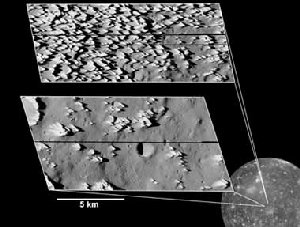These views of Callisto were taken in May 2001 by the Galileo spacecraft. The top insert shows the sharp, knobby terrain experiencing erosion. As they stand now, the knobs are about 80 to 100 meters (260 to 330 feet) tall. As these knobs erode and disappear, the terrain will look more and more like the bottom insert. The smallest features discernable in these images are about 3 meters (10 feet) across.
Click on image for full size
Courtesy of NASA/JPL/Arizona State University
A Revealing Look at Callisto
News story originally written on September 5, 2001
The
Galileo spacecraft was only 86 miles (138 km) above the surface of Callisto when it took the pictures to the left. These are the highest resolution views ever seen of any of
Jupiter's moons. You can see features in these pictures just 10 feet (3 m) across!
The knobby landscape shown in the top insert was of most interest to scientists. Scientists thought Callisto was geologically dead, but this landscape appears to be experiencing erosion. Scientists aren't exactly sure how these hills were originally formed or why they are experiencing erosion. Scientists think the hills might have been leftover from some large impact billions of years ago. Whatever the cause of their formation, each icy hill is now surrounded by darker dust that appears to be slumping off the peak. "One theory for an erosion process is that, as some of the ice sublimes away into vapor, it leaves behind dust that was bound in the ice. The accumulating dark material may also absorb enough heat from the Sun to warm the ice adjacent to it and keep the process going." (Text courtesy of JPL News) The hills will eventually disappear as erosion continues. The lower insert shows a portion of the surface where the hills have more completely eroded away, leaving a plain of dark material.
Callisto is one of the Jupiter's Galilean moons. Callisto is an icy moon about the same size as Mercury.
You might also be interested in:
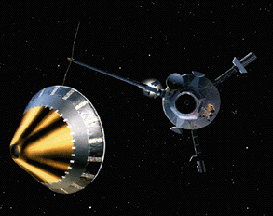
The Galileo spacecraft was launched on October 19, 1989. Galileo had two parts: an orbiter and a descent probe that parachuted into Jupiter's atmosphere. Galileo's primary mission was to explore the Jovian
...more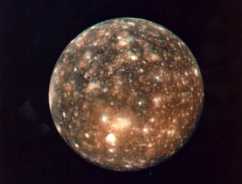
Callisto was first discovered by Galileo in 1610, making it one of the Galilean Satellites. Of the 60 moons it is the 8th closest to Jupiter, with a standoff distance of 1,070,000 km. It is the 2nd largest
...more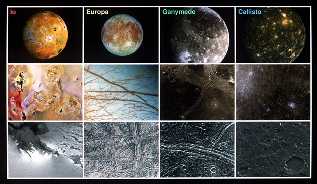
The Galilean satellites are the 4 major moons of Jupiter, Io, Europa, Ganymede, and Callisto. In this picture, Io, and Io’s surface, are shown on the left-most end, then Europa, and its surface, then Ganymede,
...more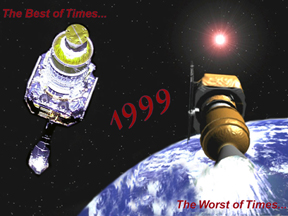
It was another exciting and frustrating year for the space science program. It seemed that every step forward led to one backwards. Either way, NASA led the way to a great century of discovery. Unfortunately,
...more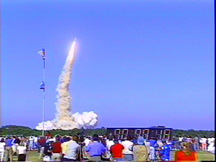
The Space Shuttle Discovery lifted off from Kennedy Space Center at 2:19 p.m. EST, October 29th. The sky was clear and the weather was great as Discovery took 8 1/2 minutes to reach orbit for the Unitied
...more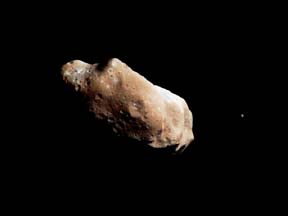
A moon was discovered orbiting the asteroid, Eugenia. This is only the second time in history that a satellite has been seen circling an asteroid. A special mirror allowed scientists to find the moon
...more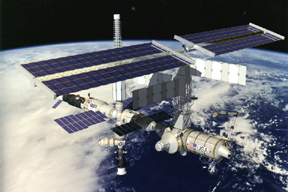
Will Russia ever put the service module for the International Space Station in space? NASA officials are demanding an answer from the Russian government. The necessary service module is currently waiting
...more


